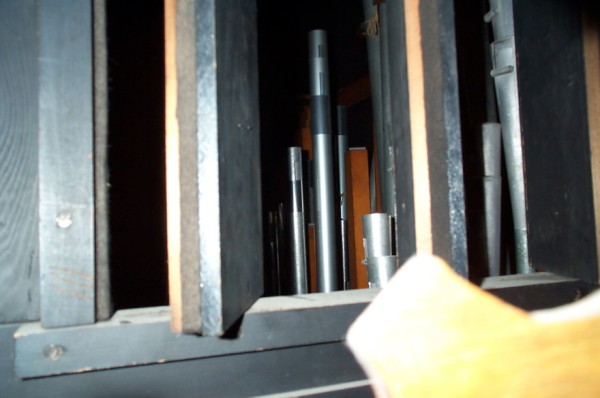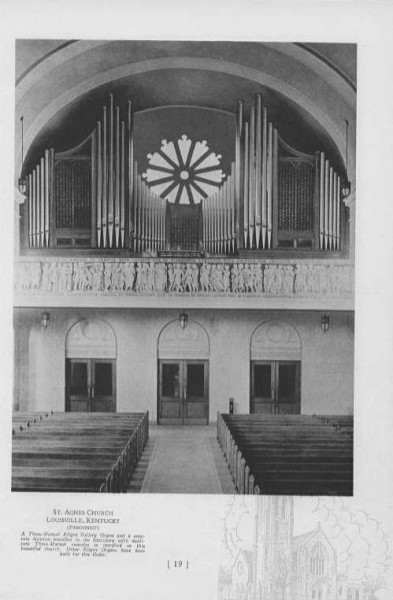
St. Agnes Organ Project
Article about the Kilgen Organs at
St. Agnes
March 2007 (Adobe PDF format)
April 12, 1934 Fr. Aloysius Dowling, C.P., pastor of St. Agnes Church, signed a contract with George Kilgen and Sons, Organ Builders of St. Louis, Mo. to build a 42 rank pipe organ. The cost was $14,500. The contract notes that the "Special Specifications" of the organ were "Drawn for the Rev. Frs. Anselm and Austin, C.P. by Prof. D'Avignon Morel." Professor Morel of Detroit was a world-renowned organ architect. The organ came with a ten year parts and labor warranty, and an additional twenty year warranty on parts.
The firm of George Kilgen & Son was liquidated in 1939. The reorganized firm, headed by Eugene R. Kilgen, became The Kilgen Organ Co. of St. Louis. Alfred G. Kilgen moved to the West Coast, and from 1945 to 1958 he maintained his own organ firm, independent of the St. Louis company. The last of the St. Louis Kilgen organs was installed in 1959, in the Cathedral of the Immaculate Conception, R.C., Kansas City, Missouri. On March 29, 1960 the St. Louis Globe-Democrat announced that the machinery, dies, and tools of the Kilgen Organ Co. had been sold for $20,000. Labor trouble was blamed for financial difficulties that resulted in a foreclosure by the Small Business Administration on a $160,586 loan [The History of the Organ in the United States by Orpha Ochse, Indiana University Press, Bloomington and Indianapolis.]

Picture from Seven Generations in the Building of Pipe
Organs,
The Kilgen Organ Company, 1951.
Notice the rose window before it was stained glass,
and back of church before the baptismal font was built.
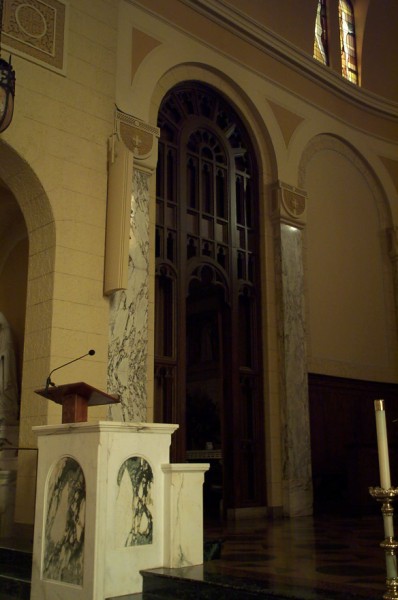
The pipes for the Sanctuary Organ are still behind the screen
above the entrance to the oratory.
The second console was disconnected and moved out of sight, just inside the
oratory.
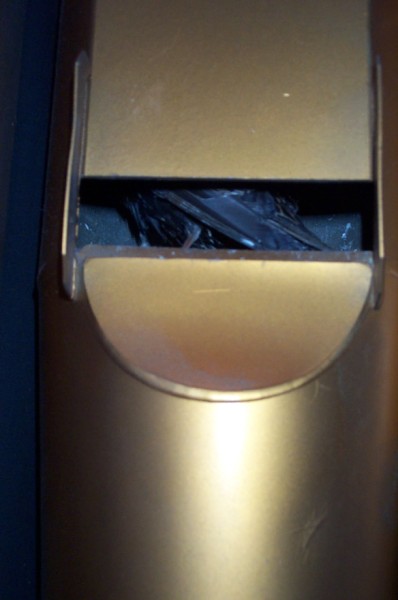
On Saturday, March 10, 2007 I heard a bird flapping around
inside one of the fašade pipes,
and snapped this picture of it in the mouth of the pipe! By Sunday morning it
was dead.
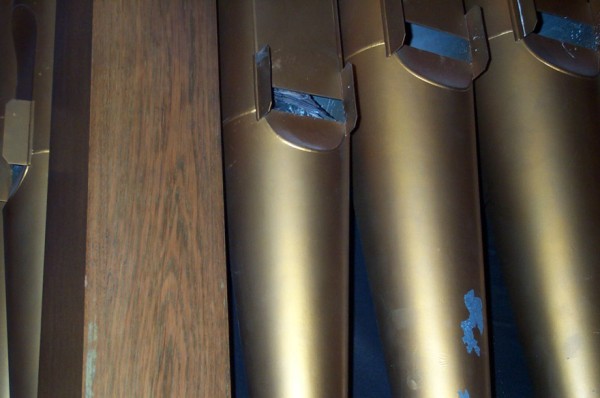
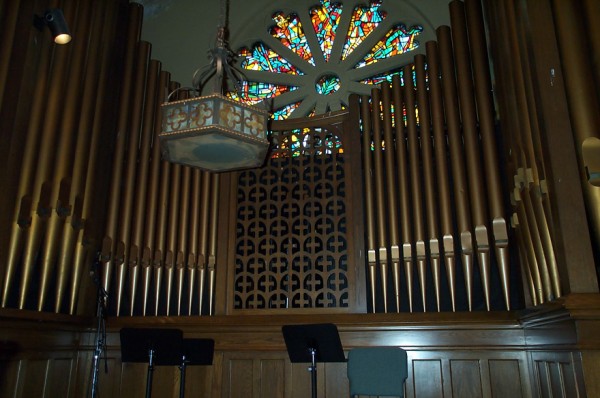
The Choir Division is enclosed behind the screen and facade pipes.
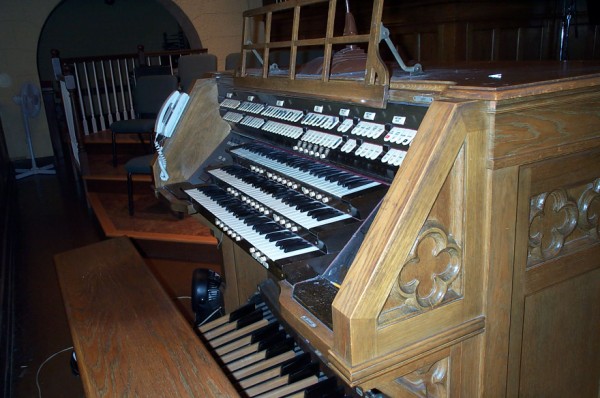
The Main Organ console.
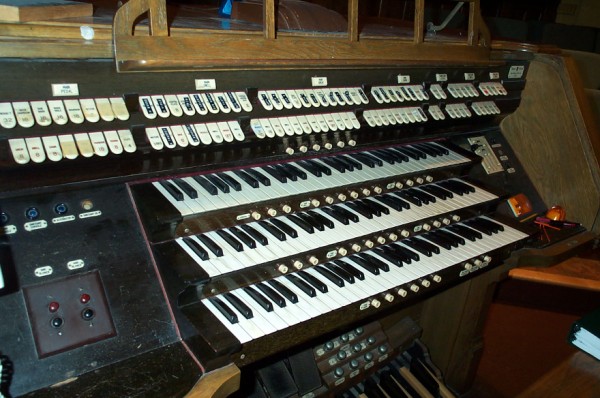
The upper manual is unusable.
The Swell Division was disconnected about 1995 due to leather action failure.
The small round buttons under each keyboard are pistons.
Toe pistons can be seen above the pedal board. Neither pistons work
reliably these days.
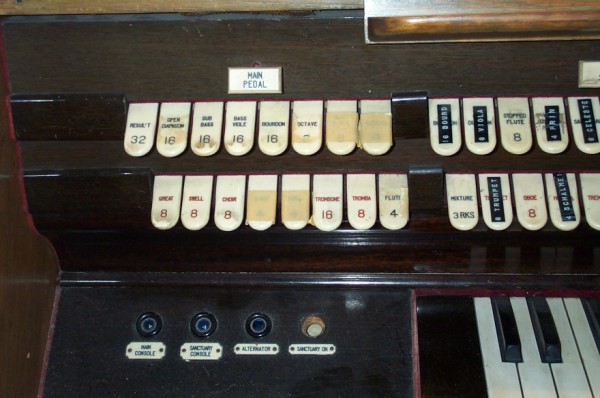
Only the Sub Bass 16 and Bass Viole 16 work in the Pedal Division.
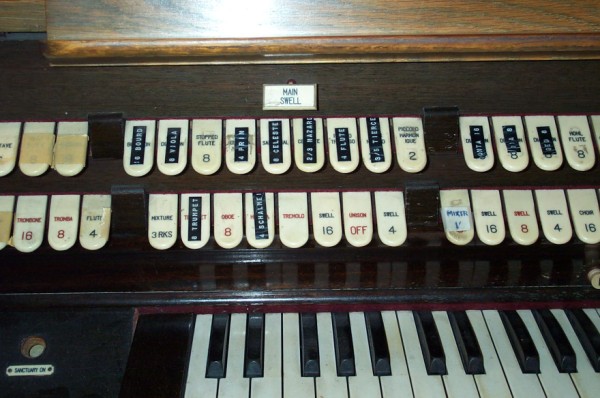
The Swell Division has been disconnected due to leather action failure.
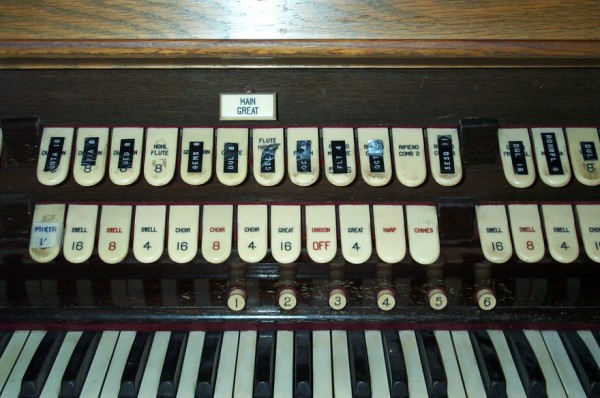
The Great works at this time, but as you can see by the
plastic labels,
many stops were changed from the original specifications.
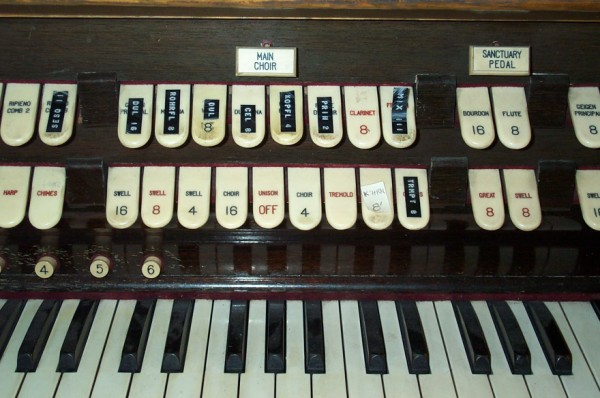
The Choir works at this time with many stops changed from the original specifications.
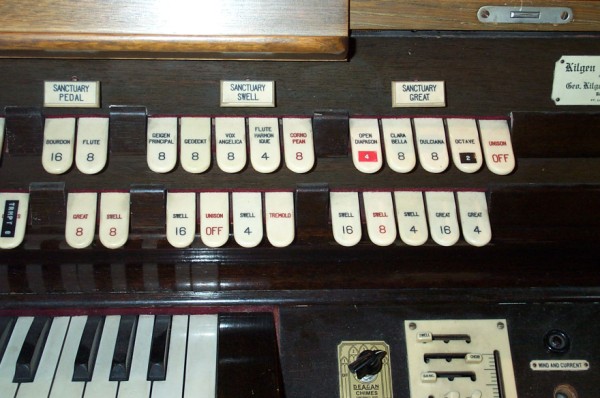
The Sanctuary Organ was disconnected in the 1970's.
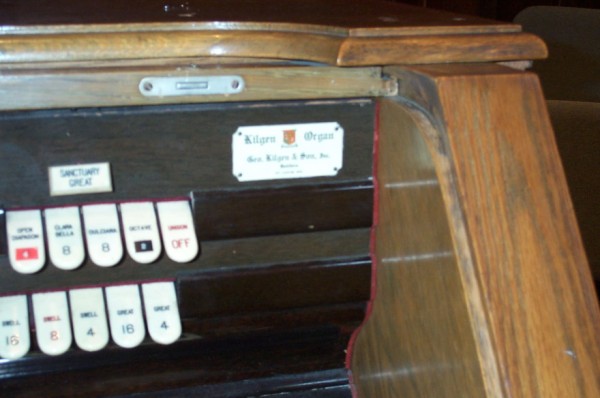
The Kilgen marker.
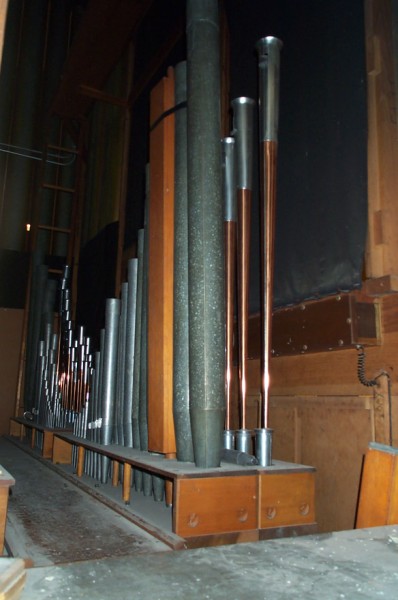
A view inside the Great Division. Note the random wood
pipe in the rank of metal pipes.
The copper Trumpet en Chamade are meant to be mounted horizontally.
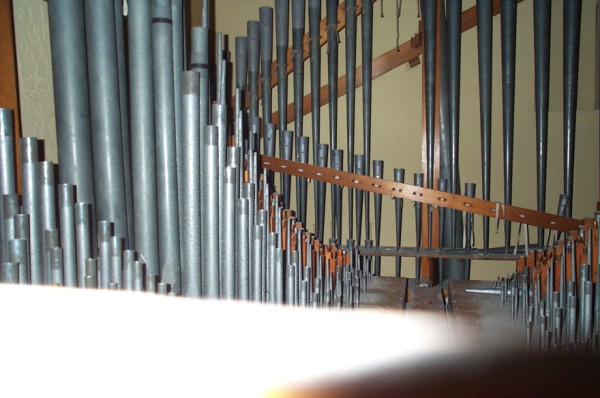
Another view in the Great Division. Note missing pipes in the back center.
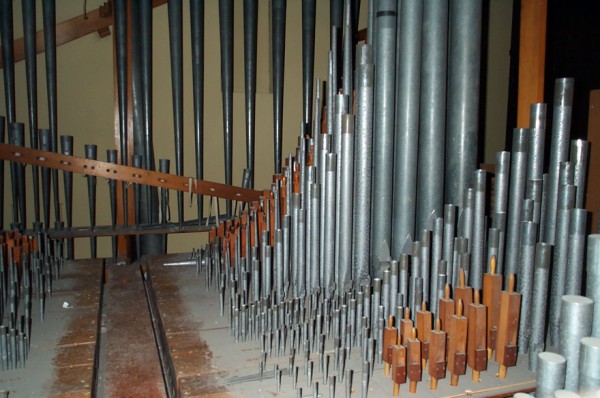
Another temporary fix of substituting wooden pipes in a rank of metal pipes.
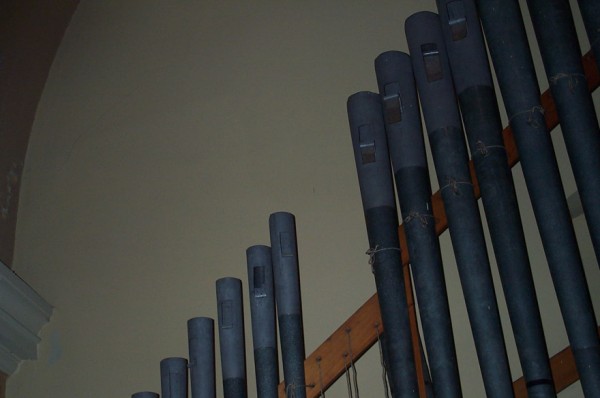
Missing pipes. I think this are supposed to be Trombone pipes from the Pedal Division.
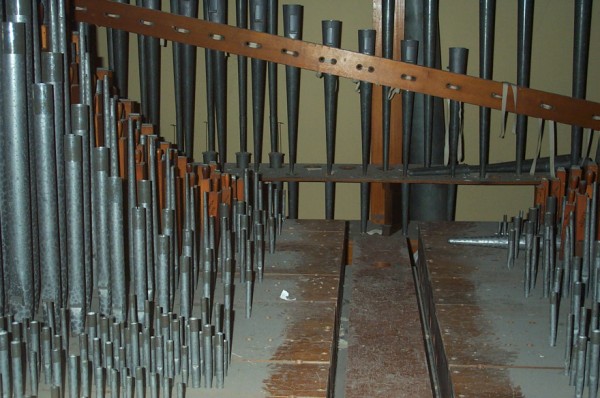
Note the years of dust that has accumulated.
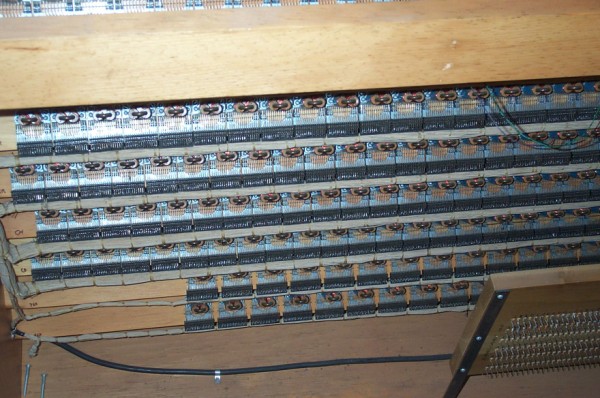
This Direct Electric action replaced the failing leather
action of the Choir Division in the 1970's.
Now this action is failing and needs to be replaced.
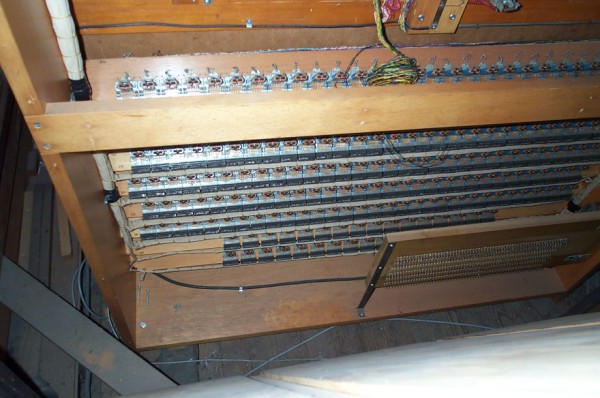
Note wires laying on the floor.
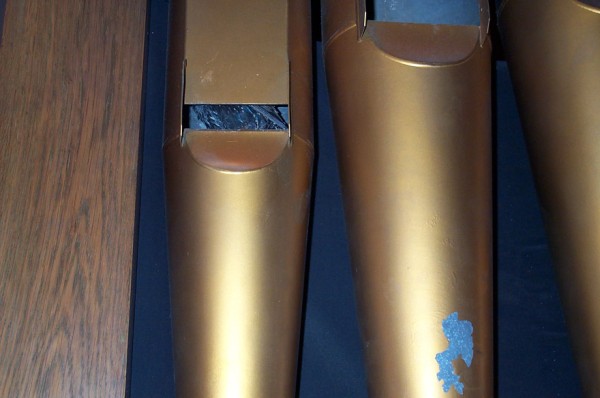
A bird in the facade pipes. Paint is flaking off in places.
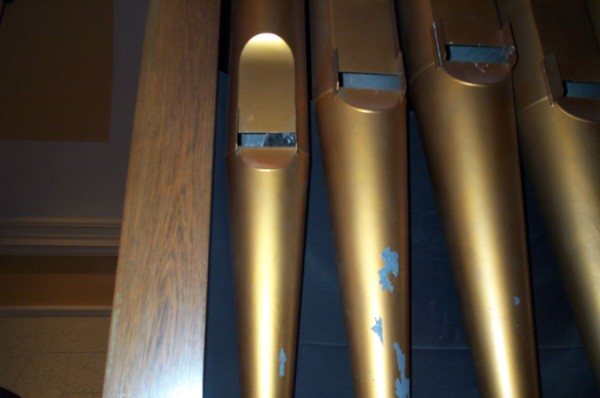
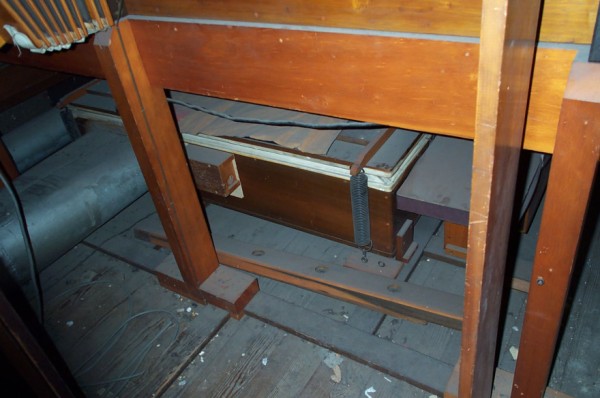
Wind reservoir under the Swell Division.
Leaks contributed to the Swell being disconnected in the 1990's.
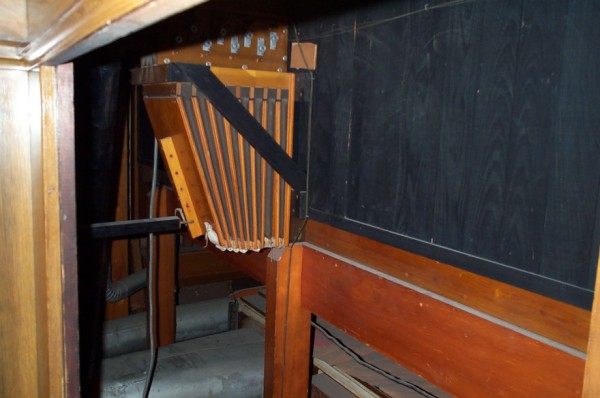
Tremolo unit?
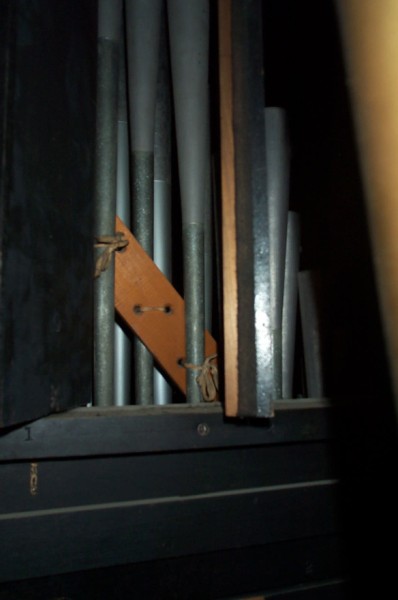
A view of some of the pipes in the enclosed Swell Division
